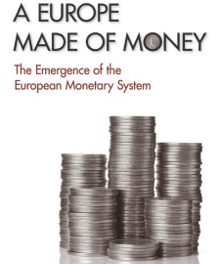Authors: Sarah Parsons Zackheim, with Adrian Zackheim
Publisher: Dummies, A Brand Imprint of Wiley Publishing – 355 pages
Book Review by Sonu Chandiram
I believe only insiders in the publishing industry can be qualified to advise someone who wants to be an author. This is true for almost all people unless the intending author is a celebrity of some sort or a recognized authority in a new field that has sparked a lot of interest among the public, such as social media, for example.
The authors have many years of experience in the publishing world. They are also published authors themselves, so they have been on both sides of the book editor’s desk. This gives them unique insight in helping you become an author.
Sarah Zackheim is a freelance writer who has authored or coauthored three books. But what qualifies her more to write about how to get your book published is that she has about a decade of experience in the publishing field, having worked at Doubleday, New York Times Books and William Morrow.
Adrian Zackheim currently works as associate publisher at HarperCollins and is editor-in-chief at HarperInformation. He has extensive experience in the publishing world, having started at G.P. Putnam Sons in 1975. He has also worked at Doubeday, William Morrow and St. Martin’s Press.
In this must-read book for anyone intending to become a published writer, Sarah and Adrian give you an insider’s overview of the process of how a book gets published, from the conception of the book idea in your mind to putting your idea on paper, to submitting a detailed query and a proposal, to getting a “buy” from the literary agent to having him or her search for a publisher financially interested in the revenue potential from your book, to successfully negotiating a good book deal with mutually favorable advances, options and rights.
They point out that getting a book published is not a journey for the naïve or impatient writer. As is said repeatedly, knowledge is power and the better you know what all is involved, the more likely you will achieve your objective. Specific knowledge on what the editor and the publisher are looking for and how to give them what they want is even more powerful.
To get that specific knowledge that empowers you in getting your book idea (or at a later stage, a detailed proposal) accepted, you must read chapters 5 and 6 in this book. These two chapters are the most important for the budding author to read and the rest of this book review focuses on them.
Chapter 5, “How a Book Gets Bought” tells you who are the key players, your advocates or champions who will root for you, and those who might kill your proposal. Knowing who is on your side, who is not and who is neutral is critical to you.
hapter 6, “The Right Submission Strategy for You” presents seven approaches – with examples and tips on each approach – that you can take in presenting your book proposal to the acquisitions editor at a publishing house.
What are these seven approaches to getting your book proposal to the publishing house?
The first is simply to mail it to “The Editorial Department.” On very rare occasions, such an approach has actually resulted in books being published. Most of the time however, the authors write, the envelopes containing the book proposals end up in a pile in a corner and won’t get read until the stack of envelopes reaches the ceiling.
The second approach is to make a cold call to an editor. (I actually did this once, not because I was bold, but because I was in a hurry to find out if I even had chance to get my book idea accepted, before I started graduate school). But to do this and have any chance of getting your proposal reviewed is slim. I was just lucky. What’s essential in getting a meeting with an editor is doing some research is on the types of books she or he has worked on.
The authors point out that one way to find out who the editor is, is to read the acknowledgment sections of books similar to yours. They write that editors are usually pressed for time, so you would do well to call their assistants and ask if they would like to read your book proposal. If the assistant reads and likes your proposal he or she could “sell” it to her editor.
The third approach is a query letter via mail. The query would briefly describe your book idea in a paragraph, with another paragraph explaining why you are qualified to write this book, followed by a question on whether the editor is interested in receiving your entire book proposal. If no response is received after a reasonable amount of time, you can follow up with a phone call. Your letter can also be a follow-up of a phone call.
The fourth approach is via email, again sending a single-paragraph description of your book idea, qualifying yourself as having the knowledge, experience or insight (or all of these) on the subject of your book. A follow-up phone call should follow after some time to inquire whether the email was read, and if there is any interest on your book idea.
The fifth approach is the use of gimmicks. Getting your proposal creatively packaged to catch an editor’s attention has worked for some writers. But it can also backfire, as has happened with others, the authors caution.
The sixth approach is to use a literary agent. This approach has good chances of getting your book idea or even a well-developed book proposal in front of an editor. But the Zackheims point out that for aspiring authors, getting attention and the interest of a literary agent is just about as difficult s getting similar responses from an acquisitions editor. Keep in mind also that you have to pay a commission to the literary agent, which is based on your book’s future earnings.
The seventh and last approach is networking in places where editors, publishers and others in this field congregate, such as in writers’ conventions. This approach offers you multiple opportunities that can save you a tremendous amount of time and effort, since you can meet with several book editors and publishers at the same place and present them with your book proposal and get initial feedback and appointments.
I have dealt with the these book-idea selling approaches in Chapter 6 in some detail in this book review because I believe this is the most important step in getting your book published. Provided of course, you have a good book proposal that will attract the attention of an editor and the interest of a publisher who sees good money-making potential for his firm in getting your book published and marketed.
Reading this excellent book written by insiders is an absolute must for anyone wanting to get a book published.






